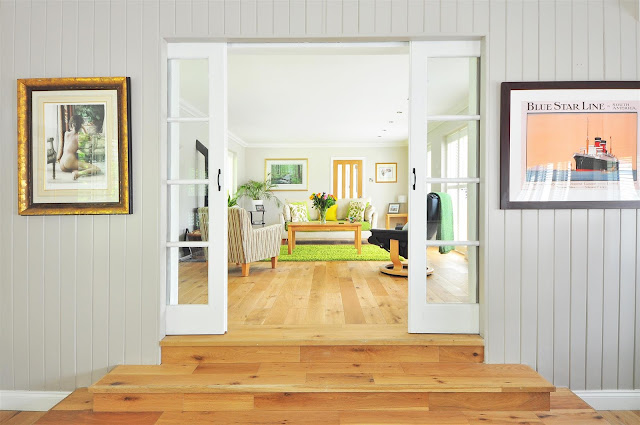So,
you’ve finally decided on getting a new floor in your home. Next comes the
tricky part, which floor is best for you and your property? If you’re looking
for something sturdy and natural you may be interested in solid wood, however
this can be quite a pricey option. Let us instead introduce you to engineered wood flooring. Engineered wood
flooring replicates the look of a solid wood floor perfectly and is actually
easier to maintain long-term. Where a solid wood floor would need extra
attention, and engineered product is far better able to withstand day to day
wear and tear. Once you’ve decided and installed an engineered wood floor,
you’ll need to know about how to look after it, so without hesitation, lets
look at how you can keep your gorgeous floor looking as good as they day you
bought it.
Day to
Day Care
You
should sweep, mop and vacuum at least once a week. This might sound like a
hassle, but once incorporated in to your regular cleaning routine it is no
hassle at all. Keeping your floor dust and grub tree will stop any build up
from occurring. Similarly, picking up any bits of grit or dirt from shoes will
help to prevent scratches that will damage the surface layer. When mopping your
engineered floor, make sure it is simply damp as an excess of water could
damage the floor causing it to swell. Stains can easily be prevented by
attending to the spill straight away. These floors are far more forgiving when
it comes the those odd food and drinks marks, so long as you make sure you see
to them as soon as they happen, this will stop any pigmentation from sticking
to the product.
Avoid
Detergent
Detergents,
such as ammonia found in bleach, should never be used as a cleaning product for
engineered floors. These products could permanently damage the flooring and may
cause some discolouration. Same goes for wax based products. Instead, stick to
your old fashioned warm water and soap to get the job done. Try to avoid using
hard water, this can encourage the wear layer to diminish. Aim to use soft
water where possible.
Use
Mats and Rugs
We don’t
mean use a mat to clean your floor. However, mats are a great way of protecting
your floor against scratches and scuffs. By placing a matt at your front and
back door, you will essentially have a filter that collects dust and other
debris. Similarly, using larger rugs in rooms like kitchens, bedroom and
lounges will also protect your floor from damage. Using a rug under furniture
such as a bed or sofa for example will not only add beautiful decor, but will
protect your floor from scratching under the feet of the furniture.
Vinegar
Is there
anything white vinegar can’t do? It seems to be the one thing cleaning tips
always come back to and for good reason. White vinegar is excellent at buffing
up and bringing shine back to furniture, including your floors. Always mix
white vinegar with water though, this stops the vinegar from becoming too
overpowering. The mix needs to have 200 ml of vinegar in 4 litres of warm
water. When using white vinegar and water to clean, first you need to remove
any dust or dirt from the floor by giving it a quick sweep or hoover. Once the
floor has dried, go back over it with just warm water on its own to remove any
vinegar residue. This is a timeless cleaning tip, so long as you can stand the
smell!
Hopefully
these few maintenance tips will keep your home and your floor looking spic and
span.








No comments:
Post a Comment